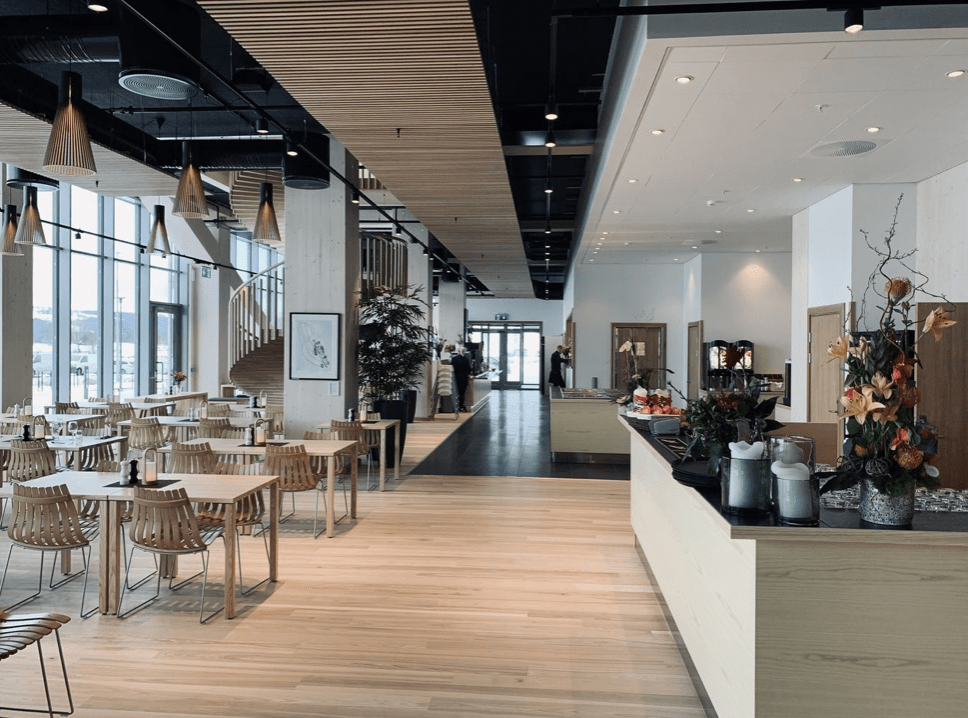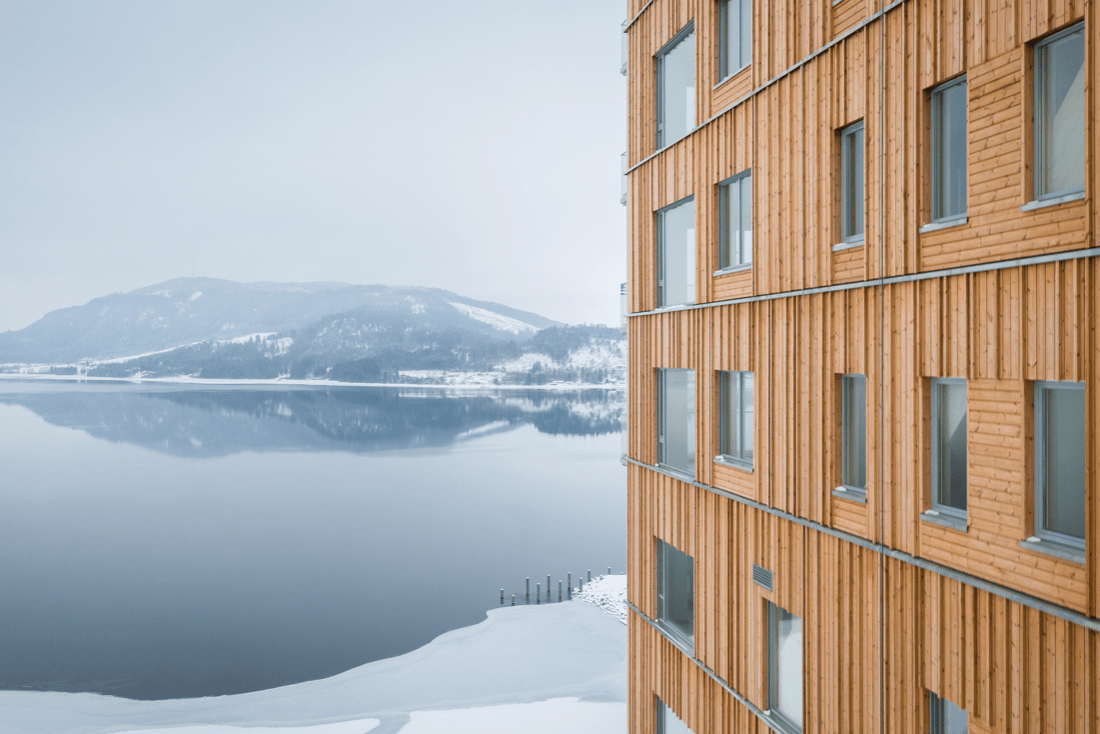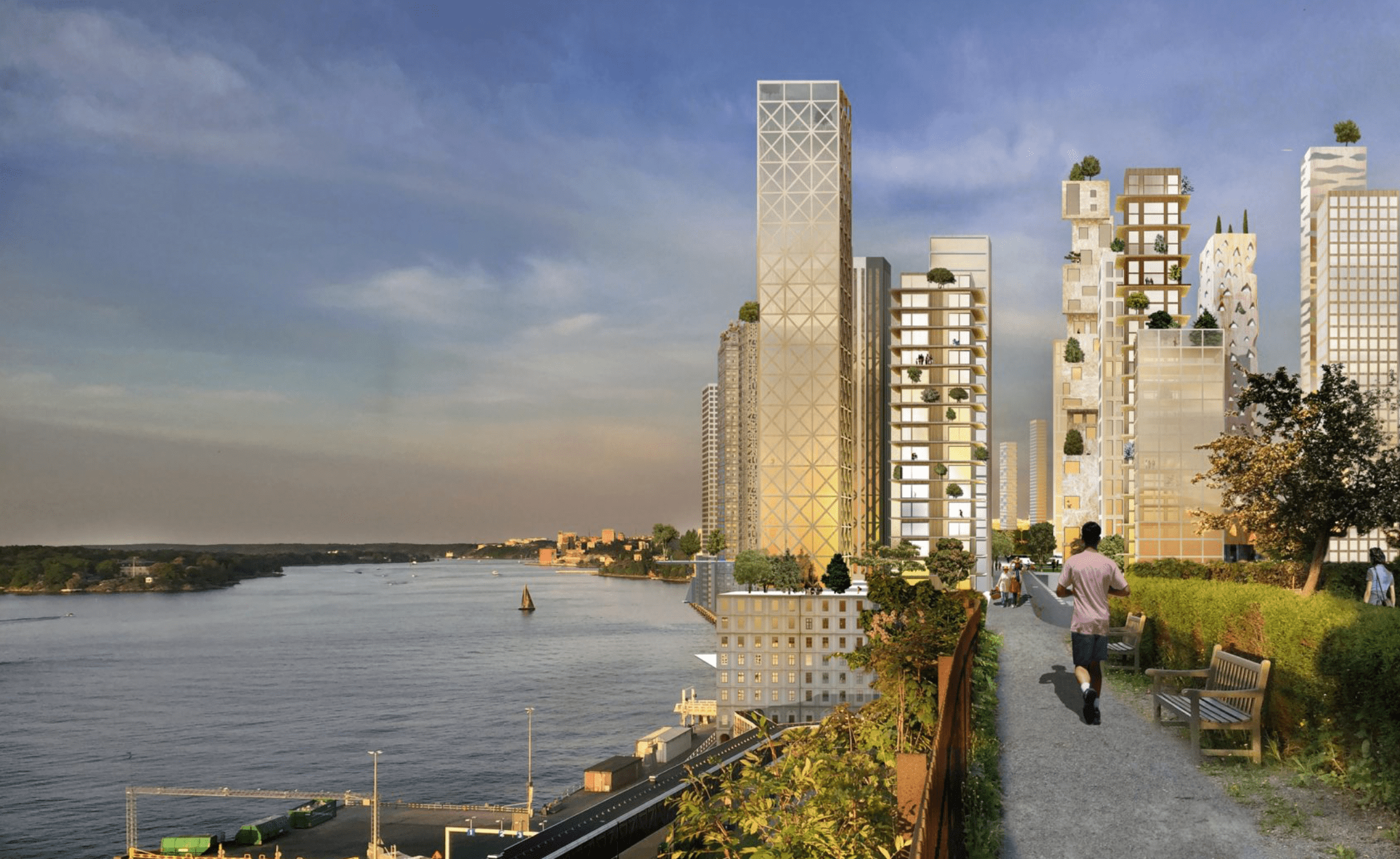
Norway’s third tallest skyscraper also has the most unique construction: it’s made completely out of wood. The building, known as Mjøstårnet – meaning tower of Mjosa – is located in Brumunddal, a small industrial Norwegian town that sits on the edge of Lake Mjosa. This small town is known for its role in the lumber industry, making it the perfect location to build the tallest wooden skyscraper in the world.
Built with local pine and harvested straight from its backyard, Mjostarnet is the pinnacle of lumber-based architecture. Featuring 18 stories, a hotel, office space, a pool, and a restaurant, the structure is nearly 300 feet tall. While it’s a tenth of the size of the largest skyscraper in the world – located in Dubai – for a country where the average size of a building is three stories, Mjostarnet is quite the feat.

Mjostarnet was constructed with 100% different types of engineered wood, produced to be equally as strong as steel. Everything, including the elevator shaft, features complete wooden construction. Glulam, short for glue-laminated timber, is comprised of timber bound together with weatherproof adhesive. Glulam can be produced in different forms, including massive blocks used to make up the main load-bearing portions of the skyscraper. By engineering it in this way it makes the wood extra dense and stronger than normal. Because of this, Glulam provides wooden skyscrapers with the same strength and stability as steel would to a classically built structure.
There are many benefits to using bio-based building materials, especially ecologically. Based on a study done in 2018, on average the production of concrete and other common building materials, makes up about 28% of carbon emissions. The chemical and thermal processes involved in producing concrete alone contribute to 8% of global emissions.
Not only is the production of these materials unsustainable, but the chances of them being recycled are low. It’s far more economical for companies to just produce more rather than recycle. As a result, a majority of landfills are filled with unused concrete and steel from demolished buildings.
In comparison, producing Glulam and cross-laminated wood store CO2, rather than adding to the production of CO2 emissions. Oftentimes, especially in locations like Scandinavia, timber can be locally sourced and produced. This eliminates a massive amount of emissions that would usually be produced when transporting building materials like concrete and steel to a construction site. The invention of cross-laminated timber and Glulam has provided the construction industry with a unique and sustainable alternative to producing stable and structurally sound buildings.

The timber trend is gaining ground in the architectural industry. Especially in Scandinavia. After the completion of Mjøstårnet, architects are recognizing the benefits bio-based building materials may have on the industry as an alternative to traditional ones. It’s becoming more and more apparent the effects of pollution on the atmosphere. Many cities have recognized this and are attempting to build environmentally conscious. In addition to intentionally building with sustainable products, in places like Norway, Norwegian law requires harvested timber to be replanted. Thus providing new growth for future generations, making wood a reliable reusable resource.
With many cities focusing on decreasing their carbon footprint and producing more sustainable and “environmentally friendly” products, engineered wood may become even more popular shortly. Places like Norway, and Scandinavia have architects designing their next big wooden skyscrapers or even entire developments.
Developers in Stockholm, Sweden have already proposed a development constructed completely out of wood. This includes a variety of wooden skyscrapers featuring shops, restaurants, office buildings, and apartments covering 19 city blocks. The use of wood in the construction of modern cities could change how we recognize them today.
Forget the concrete jungle, it may not be long before wooden skyscrapers are the new norm.

Europe has practiced sustainable forestry practices for many hundreds or years. The Amazon issue is massive clearcutting also known as one-time harvesting. In the old days, European “Kings Land” designations restricted the destruction of the forests. Note that Swiss and Austrian villages restricted timber harvests upslope of structures to mitigate avalanches hundreds of years prior to the European exploration of North America. European forest harvest practices can include the method where the target is to leave a variety of diameters (they harvest more thin trees than thick). When Europeans arrived in the “New World” they saw the trees and no one to tell them not to run rampant and started the North American style of forestry–take it all and screw anyone who complains.
With what’s going on in the Amazon, who thought it was a good idea to find additional applications for wood? Granted, if forests were treated similarly to other crops whereby there was a constant rotation of re-planting and harvest and demand never exceed supply, it’d be fine, but resource responsibility has never been a strength of humanity. Increasing the demand for wood would just result in further deforestation and reduced carbon capture, which is arguably just as bad as the increased carbon output from buildings made of Concrete and Steel.
BS. Concrete and steel are recycled all the time. It’s standard industry practice in the building demolition trade. The old concrete is pulverized and reused as aggregate in new concrete or used and base material for road beds or foundations etc.
Wood structures are carbon capturers.
Also thinning out the forest helps with fire management.
Eighteen stories is a tall building but the term “skyscraper” brings to mind much taller buildings. Granted the building is tall compared to other structures in the location–maybe “fog piercing” rather than skyscraper.